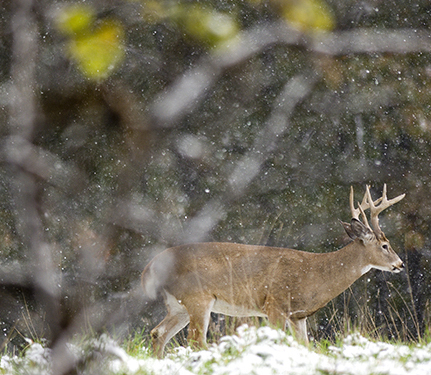Michigan DNR reminds anglers of ice shanty removal dates and urges caution

The Michigan Department of Natural Resources reminds anglers that mandatory ice shanty removal dates are approaching. Regardless of the date, shanties must be removed as soon as the ice is unable to safely support them. The ice quickly can become unsafe for anglers to retrieve their property in warmer weather.
Ice shanties on Lake St. Clair must be removed by sunset Sunday, Feb. 25.
For counties in the southern Lower Peninsula, shanties must be removed from the ice by midnight Thursday, March 1.
The deadline for removal from waters in the northern Lower Peninsula is midnight Thursday, March 15. Counties in this area are Alcona, Alpena, Antrim, Arenac, Bay, Benzie, Charlevoix, Cheboygan, Clare, Crawford, Emmet, Gladwin,Grand Traverse, Iosco, Isabella, Kalkaska, Lake, Leelanau, Manistee, Mason, Mecosta, Midland, Missaukee, Montmorency, Newaygo, Oceana, Ogemaw, Osceola, Oscoda, Otsego, Presque Isle, Roscommon and Wexford.
On Michigan-Wisconsin boundary waters, ice shanties must be removed by midnight Thursday, March 15. For all Upper Peninsula counties, shanties must be removed by midnightSaturday, March 31.
Following the mandatory removal dates, ice shanties still may be used but must be removed daily from the ice.
Shanty owners whose structures fall through the ice are subject to penalties of up to 30 days in jail, fines of $100 to $500, or both. If a shanty is removed by a government agency, the court can require the owner to reimburse that agency for an amount of up to three times the cost of removal.
For more information on Michigan’s ice fishing regulations and shanty removal dates, check out the 2017 Michigan Fishing Guide.
DNR conservation officers also remind individuals venturing onto the ice to use extreme caution as temperatures begin to rise in the spring. The repetitive thawing and refreezing of ice weakens its integrity, decreasing its ability to support additional weight from individuals, snowmobiles and shanties. Deteriorating ice, water currents and high winds increase the probability of pressure cracks, which can leave anglers and others stranded on ice flows or at risk of falling through the ice.
To learn more about staying safe while on the water or in the woods, visit the DNR website at www.michigan.gov/recreationalsafety.
Contact: Sgt. Steve Orange, 616-292-0283





